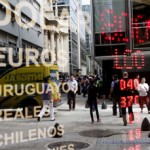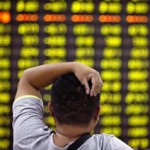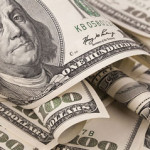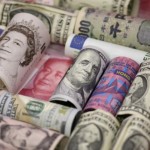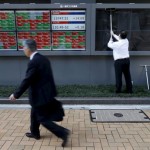U.S. Dollar Falls after Lack of Fed Guidance

The dollar fell the most in more than a week as minutes from the Federal Reserve’s last meeting failed to provide additional insight on the pace of interest-rate increases next year.
The euro gained for a third day versus the U.S. currency as it approached a key technical level. The yuan rose to the strongest in three months on the first of two days of China-U.S. talks and before a report economists said will show the Chinese trade surplus rose in June. New Zealand’s dollar approached a record high, while the Swedish krona rallied the most in almost four weeks.
“There’s no surprises in the minutes — you usually get a broader, less dovish flavor in the minutes,” said Vassili Serebriakov, a New York-based foreign-exchange strategist at BNP Paribas SA. “But nothing deviated significantly from the dovish Yellen at the press conference. The market is a bit disappointed.”
The Bloomberg Dollar Spot Index, which tracks the greenback against 10 major counterparts, dropped 0.1 percent to 1,004.89 at 5 p.m. in New York after sliding 0.2 percent, the most since June 30.
The dollar slipped 0.2 percent to $1.3642 per euro, and was little changed at 101.64 yen. The single currency climbed 0.3 percent to 138.65 yen.
Moving Average
The euro rose as it approached $1.3658, the 50-day moving average that some traders consider a measure of momentum. Its hourly relative strength index climbed above 70, a signal that shows the currency may have risen too far, too fast and is due to reverse.
“It could be a little bit of stop-run through the overnight high,” Brad Bechtel, managing director at Faros Trading LLC in Stamford, Connecticut, said in a phone interview. “The 50-day moving average is the next chart point to watch out for on the topside.”
The krona rose against all of its 16 major peers after Sweden’s Labor Board said the unemployment rate in June climbed to 4.1 percent from 3.9 percent the previous month. That’s less than the 4.3 percent estimate of analysts in a Bloomberg survey.
The Swedish krona appreciated 0.5 percent to 9.2643 per euro after adding 0.7 percent, the most since June 13, and advanced 0.7 percent to 6.7904 per dollar.
Yuan Gains
The yuan rose as U.S. Treasury Secretary Jacob J. Lew urged China to disclose when and why it intervenes in currency markets, according to an interview with CCTV America, part of China Central Television. Lew is in Beijing for the Strategic and Economic Dialogue with Chinese leaders.
China’s exports probably rose 10.4 percent last month from a year earlier, contributing to a trade excess of $37 billion, according to the median estimate of economists surveyed by Bloomberg News before data due tomorrow.
“It’s usual for China to allow some yuan gains given the political pressure as talks start,” said Kenix Lai, a Hong Kong-based currency analyst at Bank of East Asia Ltd. “An improving exports outlook and wider trade surplus will also support the yuan to test 6.175 per dollar in the near term.”
The yuan advanced 0.1 percent to 6.1993 per dollar, China Foreign Exchange Trade System prices show. It touched 6.1948, the strongest level since April 9. The People’s Bank of China raised the reference rate by 0.1 percent, the most in a month, to 6.1565. The yuan traded 0.7 percent weaker than the fixing, within the 2 percent limit.
New Zealand’s currency added 0.4 percent to 88.23 U.S. cents after touching 88.29, the strongest since Aug. 1, 2011, when it reached a post-float high of 88.43.
Fitch raised New Zealand’s credit outlook to positive from stable yesterday, citing the nation’s improving fiscal situation and supportive economy. The credit assessor affirmed the country’s AA rating, two levels below the top score.
‘Too Complacent’
Some Fed policy makers were concerned investors may be growing too complacent about the economic outlook and the central bank should be on the lookout for excessive risk-taking, according to minutes of their June meeting. They also expressed concern about low volatility in equity, currency and fixed-income markets.
“It’s just a mixed message,” Sebastien Galy, a senior-currency strategist at Societe Generale SA in New York. “Fears of a more hawkish Fed are being priced out.”
Officials agreed they must monitor markets for signs of froth and said that if necessary, supervisory measures should be used to “address excessive risk-taking and associated financial imbalances.” The minutes offered no new clues on the timing of an interest-rate increase, with officials saying policy depends most “on the evolution of the economic outlook.”
“Yellen at the press conference said the uptick in inflation we’ve seen recently is just a data blip,” said Greg Anderson, head of global foreign-exchange strategy at Bank of Montreal, by phone from New York. “It appears that from what the minutes stated, that most people agree with her that it’s a data blip. That’s the reason that the dollar’s come back off.”
Source: Bloomberg









